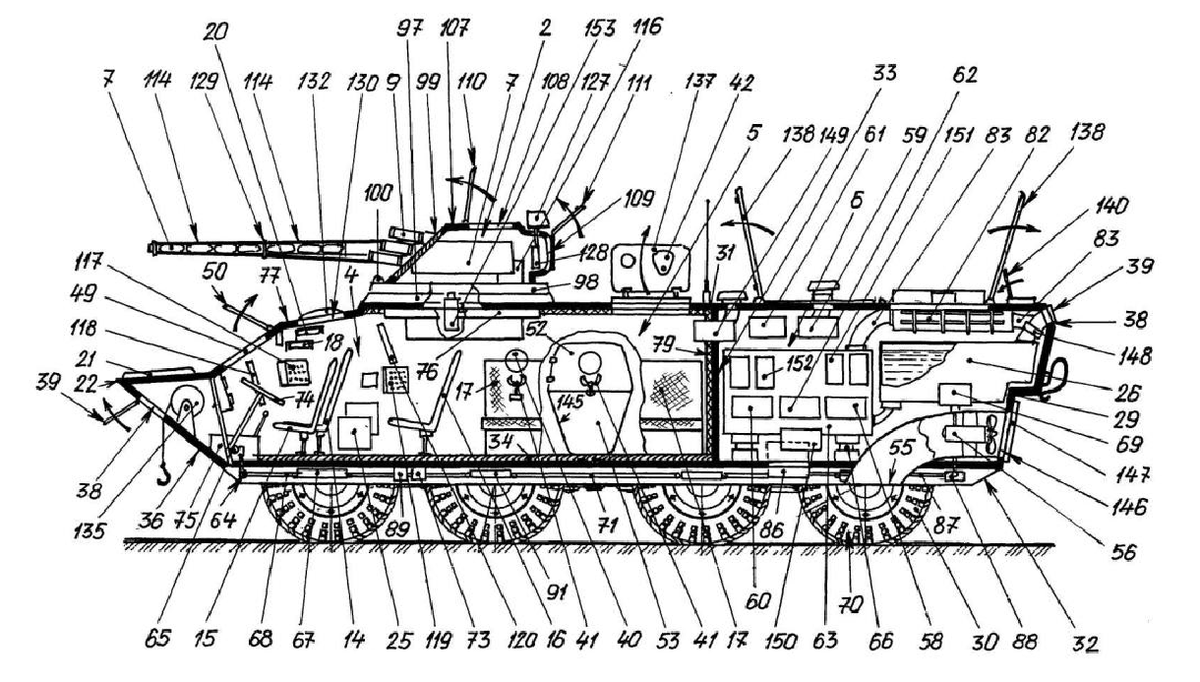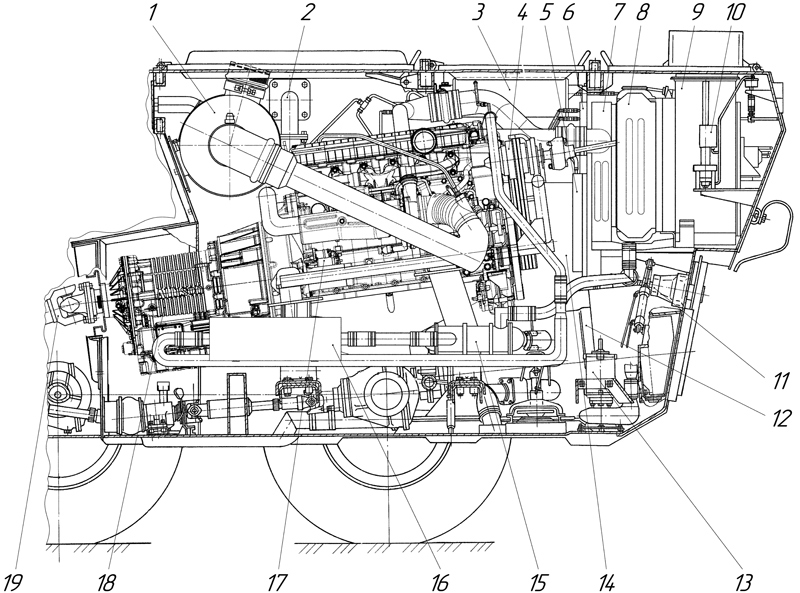(2/26) In 1986, the Soviets adopted the BTR-80 as a planned replacement for the BTR-70, based on combat experience in Afghanistan. Though outwardly similar to the BTR-70, the BTR-80 introduced some significant changes, most notably the side hatches, turret, and transmission.






(3/26) After 1991, Ukraine inherited about 500 BTR-80s of all modifications. During the Donbas War, they were the main vehicles of the three Ukrainian airmobile brigades (79th, 80th, 95th), as well as the NHU (national guard) and DPSU (border guards).
fraza.com/analytics/2642…



fraza.com/analytics/2642…



(4/26) In the 1990s, efforts were made to modernise the BTR-80. Besides the enigmatic BTR-80UM Rohan, built in very small numbers for the NHU and whose fate is unknown, the first to achieve some success was the BTR-94. These were sold to Jordan, who later gave them to Iraq.




(5/26) BTR-3 development began in 2000 under a consortium led by UAE's ADCOM. The bulk of the work was done by KhKBM and KBTZ, using their BTR-94 experience, with participation by the German Deutz and American Allison Transmissions companies.
web-archive-org.translate.goog/web/2012030923…


web-archive-org.translate.goog/web/2012030923…


(6/26) The first BTR-3 (aka BTR-DA — 'Deutz–Allison') was unveiled at the 2001 IDEX expo in 2001. It was equipped with the Shkval combat module. While the BTR-3 was developed for export, certain events would see it also being adopted for use by Ukraine.
btvt.info/1inservice/btr…

btvt.info/1inservice/btr…

(7/26) There are many different variants of the BTR-3, but the most common ones used by Ukraine today are the BTR-3E1 and E1U, of which at least 100 are known to have been delivered to the ZSU and NHU by 2015.




(8/26) The BTR-3E1U is equipped with the Shturm (BM-3) combat module, armed with a 30-mm ZTM-1 autocannon, 7.62-mm KT MG, 30-mm KBA-117 automatic grenade launcher, 2 Bar'yer ATGMs, and smoke grenade launchers.




(9/26) The turret can elevate to +45°/-5° and is fully stabilised. The turret is aimed and fired remotely using the OPT-20 optoelectronic sight/laser rangefinder (12), which feeds the information into video monitors.








(10/26) The commander also has a panoramic sight for increased situational awareness. He can take over gunnery controls if necessary.
(11/26) The 30-mm ZTM-1 is a Ukrainian produced 30-mm 2A72 autocannon. On both the BTR-3 and BTR-4, it is fitted with a truss to reduce the vibrations and thus dispersion of the 2A42/72 series, as seen on these BMP-2s.
(12/26) The ZTM-1 is compatible with the full range of 30 x 165 mm ammunition, including the 3UBR8 Kerner APDS. It is easily capable of tearing through the side and rear armour of MBTs. Anything it cannot handle can be dealt with the Bar'yer ATGMs.
https://twitter.com/Danspiun/status/1516559170018938881
(13/26) Bar'yer is the name for the Stugna-P ATGM mounted on vehicles. Suffice to say, it has proven highly effective throughout the war in its infantry version, so I have no reason to doubt it is an effective weapon on the BTR-3.

https://twitter.com/ChungTzuW/status/1684952693771579392

(14/26) The BTR-3 series also has a modified hull compared to the BTR-80 and BTR-94, with a raised roof. This was in order to accommodate the combat turret modules.






(15/26) The BTR-3E1U has the same basic hull protection as a BTR-80 (8–10 mm), although it makes extensive usage of kevlar lining to improve crew protection against spall.




(16/26) Export BTR-3E/E1s have room for 3 + 10 personnel (shown), but Ukrainian BTR-3E1Us have it reduced to 3 + 6. I would assume the 4 under the turret have been removed, as it seems a bit chummy in there, leaving the 6 in the rear. 

(17/26) Ukrainian BTR-3E1Us also do not use the Allison automatic transmissions or Deutz/MTU diesel engines of export BTR-3E1s (right). Instead, they use the 300 hp UTD-20 diesel engine of the BMP-1/2 and a manual transmission (I'd assume the BTR-80's).




(18/26) In 2015, based on feedback from service use, a new version of the BTR-3 was developed specifically for domestic use, the BTR-3DA. 

(19/26) While looking similar to the BTR-3E1U, the BTR-3DA reverts back to the standard of the BTR-3E1, with a 3 + 10 crew and Deutz BF 6 M 1015 C 402 hp engine and Allison MD 3200SP automatic transmission. It also has provision for anti-HEAT lattice screens.






(20/26) The hull has been completely reconstructed, first made of unhardened steel plates up to 30 mm thick welded together, then hardened in a furnace, allowing it to resist heavy MG fire. More kevlar spall liners have been added as well (from 7 to 18).
web-archive-org.translate.goog/web/2017110700…

web-archive-org.translate.goog/web/2017110700…

(21/26) The new Shturm (BM-3M) combat module also now includes thermal imaging for improved night fighting capabilities. It can be recognised by the more rounded cover.
web-archive-org.translate.goog/web/2016032314…

web-archive-org.translate.goog/web/2016032314…

(22/26) In addition to the BTR-3DA, there exists the BTR-3DA/70 project, which is a reconstruction of the BTR-70 into a BTR-3DA instead of a BTR-80. This would make use of the relatively large stock of BTR-70 hulls that Ukraine still has. 

(23/26) Both BTR-3DA and BTR-3DA/70 were accepted into service in 2015. Zhirokhov states that at least 90 BTR-3DAs were delivered in 2016 and 2017 to the ZSU, these figures including BTR-3K and BTR-3KSh command vehicles as well.
fraza.com/analytics/2745…

fraza.com/analytics/2745…

(24/26) According to Zhirokhov, the first ZSU units to receive the BTR-3 were the 95th and 25th Air Assault Brigades, while the primary pre-war NHU user was the Azov Regiment.




(25/26) In addition to the regular wheeled IFV, there exist command (BTR-3K, BTR-3KSh) and mortar carrier variants (BTR-3M1-1, BTR-3M2-1) in Ukrainian service in small numbers.




(26/26) Overall, the BTR-3 is a relatively successful modernisation of old BTR hulls, both in the export market and domestically, and appears to be well liked in service. No doubt it is a big step up from the BTR-70/80s, especially in terms of firepower.




(27/26) Ukrspetseksport promo film
• • •
Missing some Tweet in this thread? You can try to
force a refresh

















































